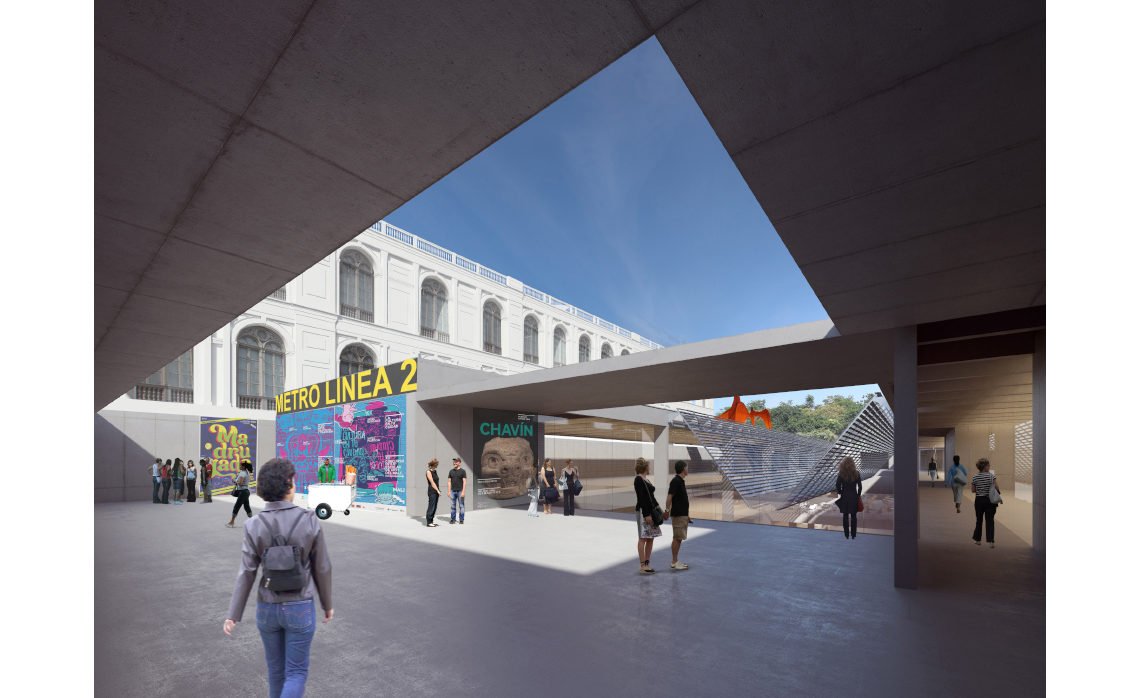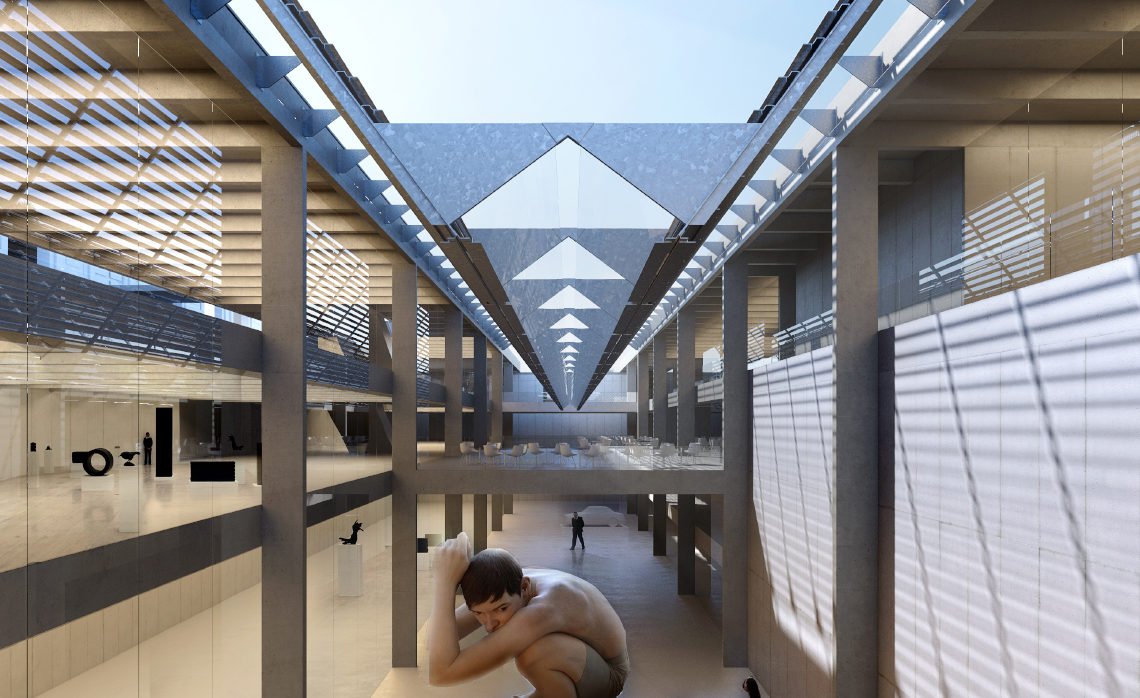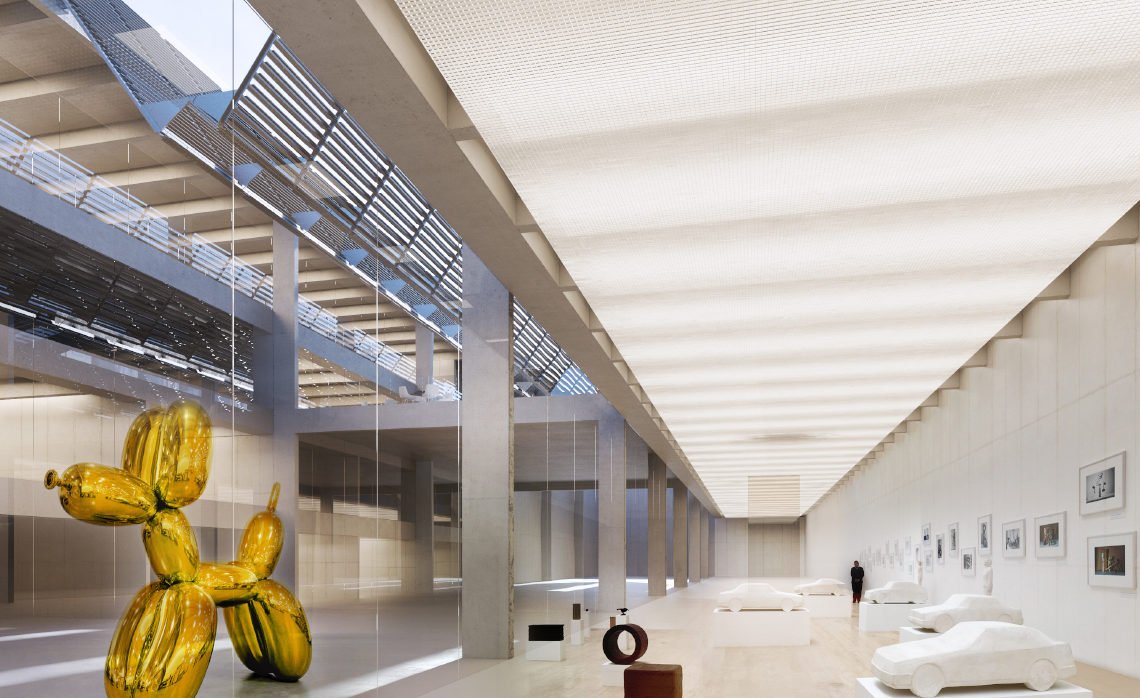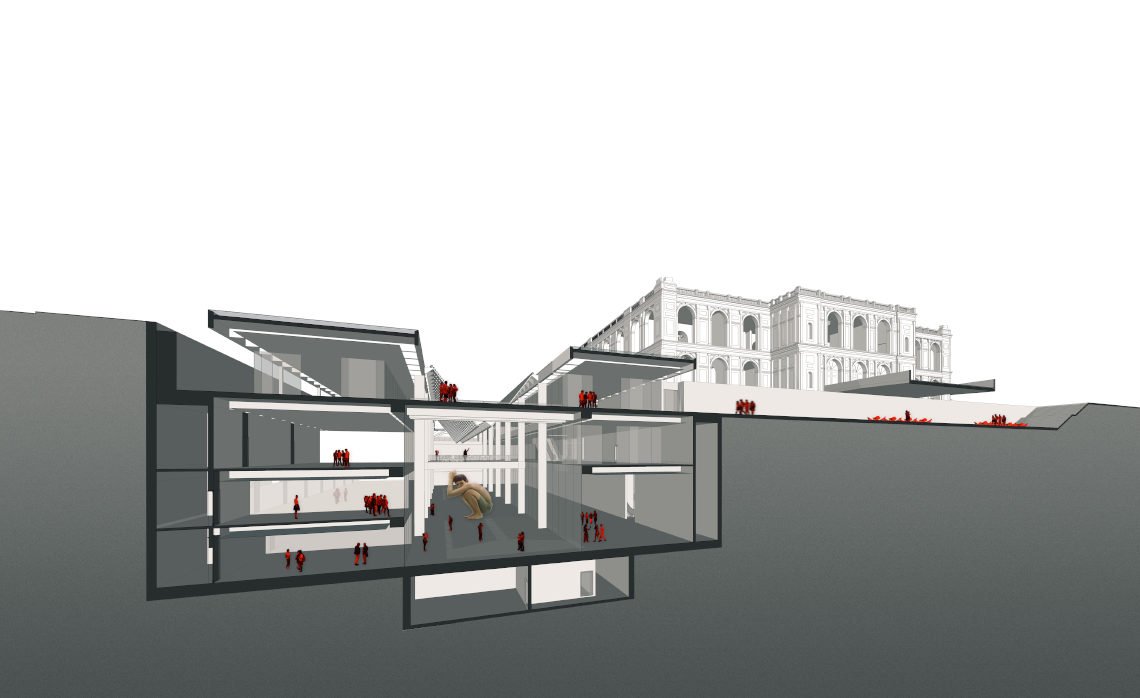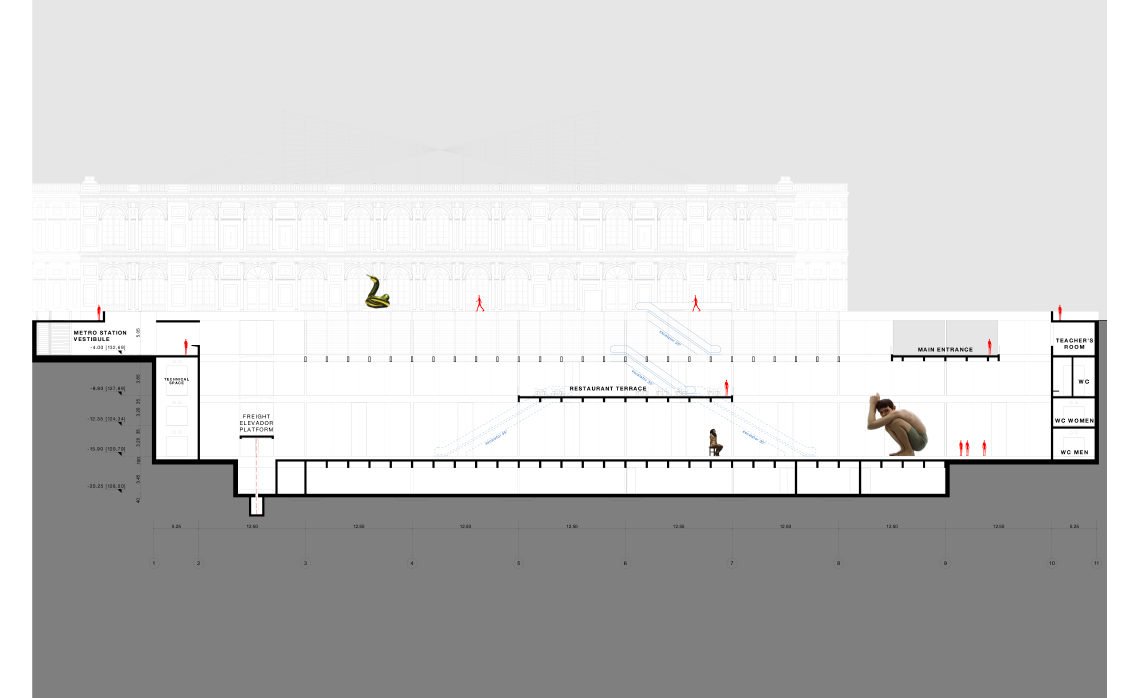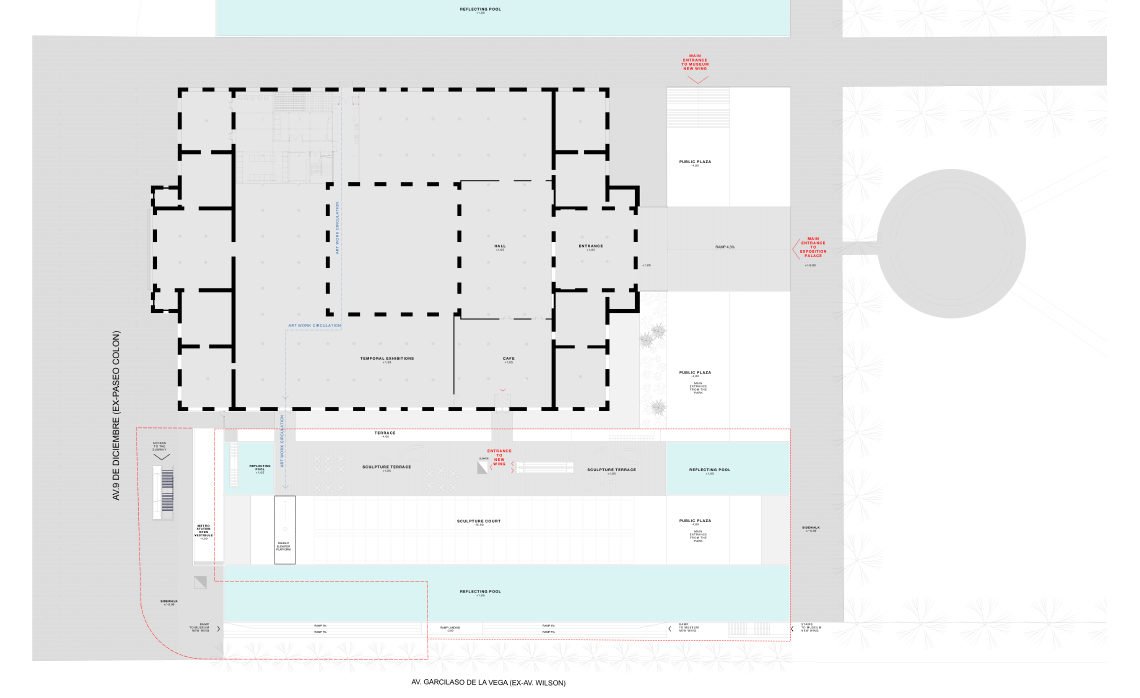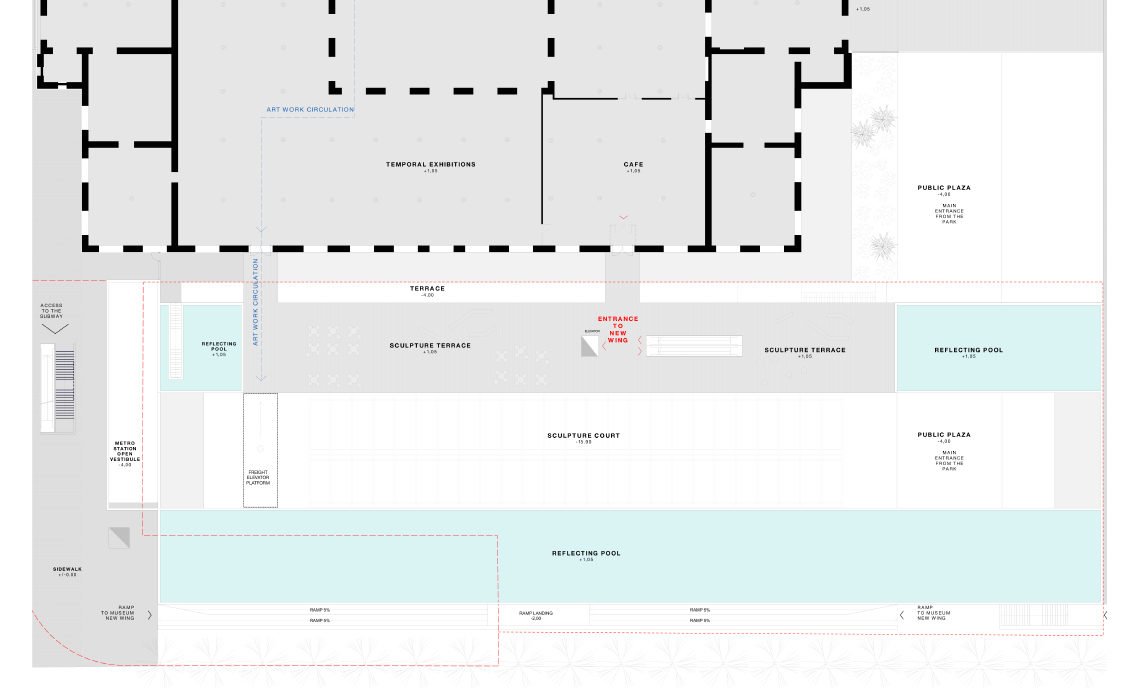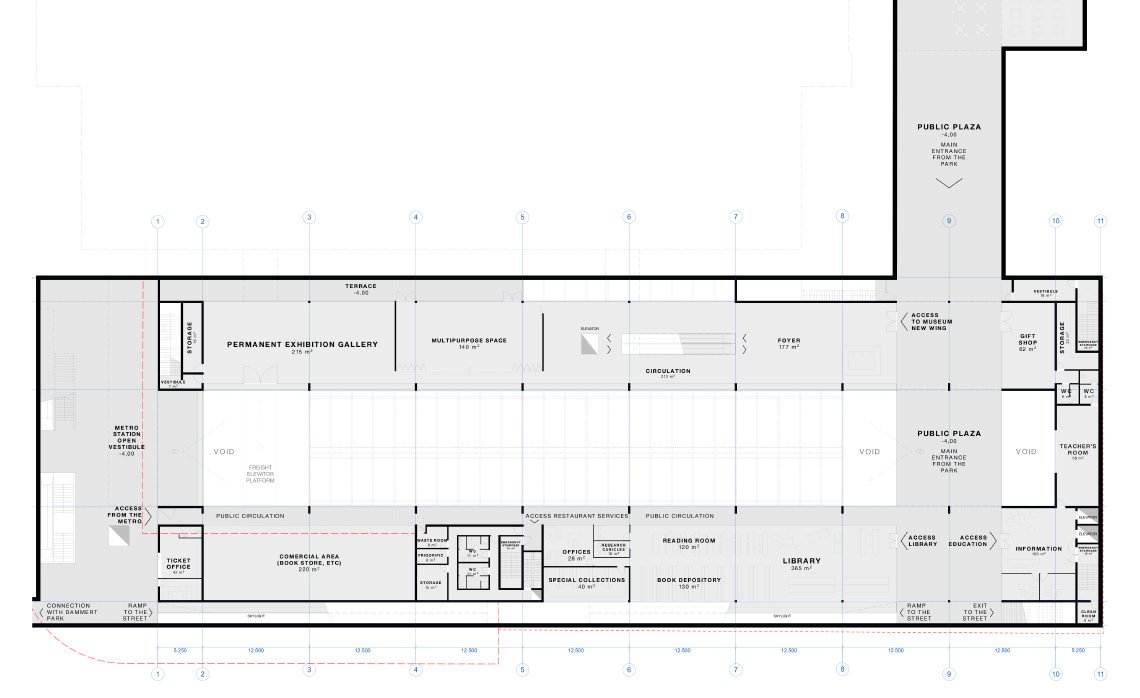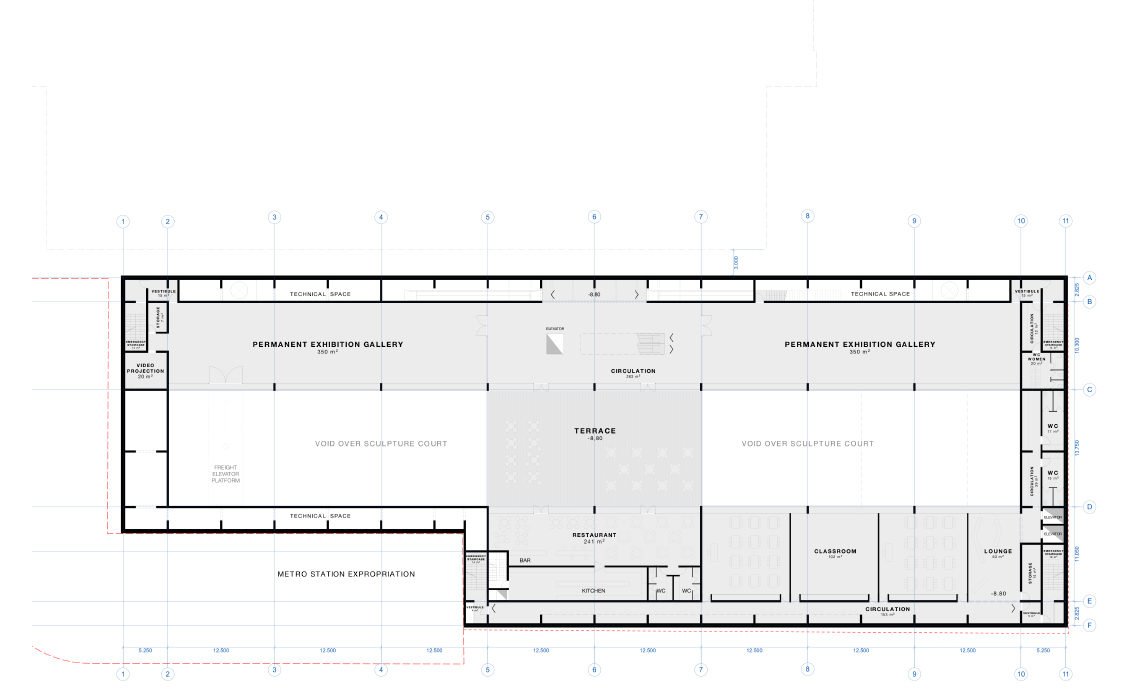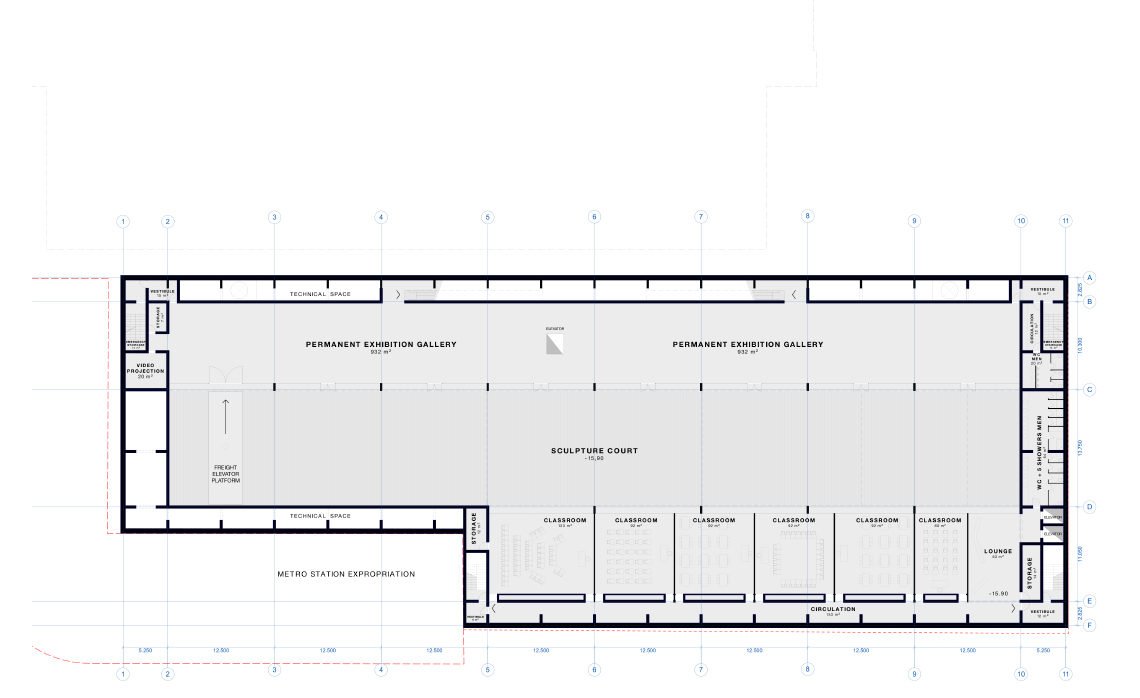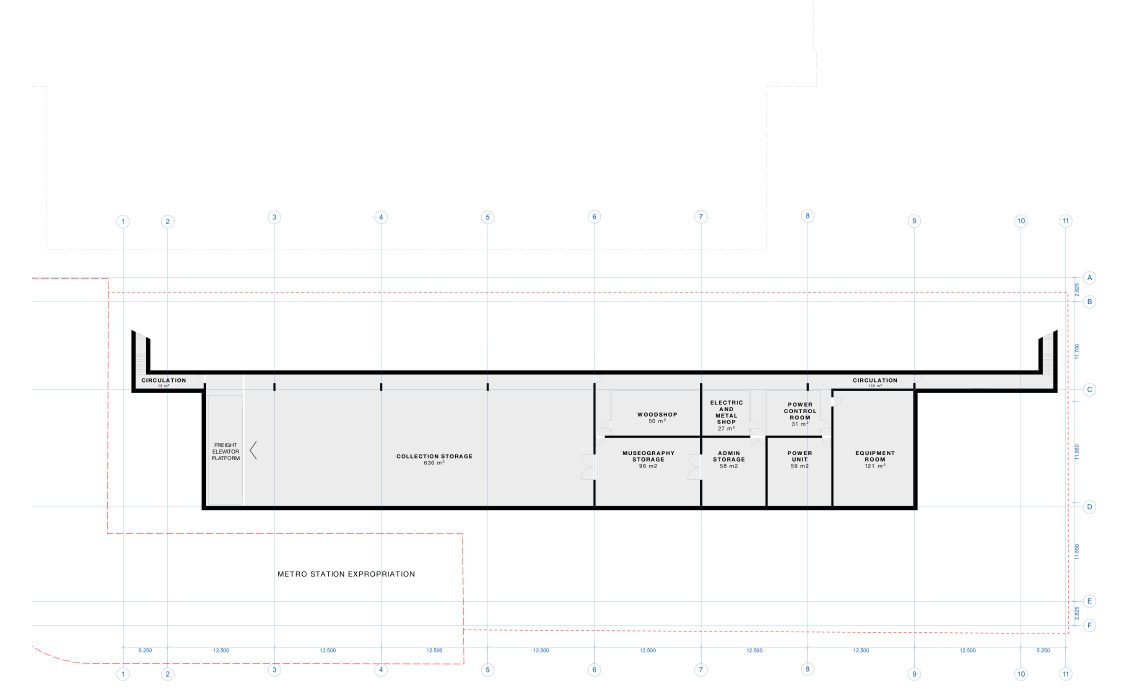Lima Art Museum – Competition Entry
Sandra Barclay
Jean Pierre Crousse
David Leininger
Blecker Ruiz
SPBR Arquitectos
Angelo Bucci
Felipe Barradas
Victor Próspero
Tatiana Ozzetti
Martha Bucci
Larissa Fiorin
Azul Campos
Andrea Pedrazzini
Eugenio Pedrazzini
Roberto Guidotti
3D MODEL
Ricardo Canton
Área = 9.400 m²
MALI IN THE PARK
The Exposition Park of Lima is a fundamental element of the city’s first expansion after the ramparts were demolished in 1868. Time and later additions have blurred the unity of the park and the legibility of it as a whole, pushing the Exhibition Pavilion to the periphery and eroding the surrounding space necessary to understand its importance.
Our proposal is to restore the building as the center of the historic park by constraining the height of the new wing to the level of the museum’s existing plinth and by integrating the materiality of the park pathways into the road.
This new ground will reestablish needed open space while simultaneously reinforcing the connection between the two parks, redefining both longitudinal and transversal main axes, and articulating their relationship to the Exposition Palace with reflecting pools.
NOTHING EMERGES
The Exposition Palace is the park’s most important structure and can be considered both a historical building and a work of art.
As a gesture of respect towards the existing historical building, the volume of new addition is pushed below the grade of the existing plinth, creating a necessary pristine surrounding plaza.
A series of reflecting pools help organize and differentiate the circulation of museum visitors and park users amongst the works of art. The pools are positioned on both sides of the Exhibition Palace, and reinforce the level of the plinth (+1.05 from the park level).
THE VOID AS A CONNECTOR
The construction of the metro station will give new centrality to the park and increase access, broadening the population of both park and museum visitors. It is essential to integrate the flow of park visitors with the flow of museum visitors in order to bring the museum closer to this larger population.
Even though these are independent circulations, we propose to visually merge these flows in a single geometrical open space through the creation of a sunken courtyard that connects the metro station, the Exhibition Palace and the museum’s new wing.
This long sculpture court reduces the existing distance between Peruvian society and art and connects people visiting the new wing, people just passing through from the metro station to the Park, people going to the Library, and people attending the Art Education Center.
COURTYARDS AS DESIGN STRATEGY
The sculpture court is the new wing’s counterpart to the MALI courtyard. In both cases, a protected outdoor space is not only a connector of various activities happening in each building, but it also defines a common identity: the existing MALI folds around a symmetrical square space, while a more dynamic rectangular space for the new wing runs along the exhibition galleries.
As in the existing building, the New Wing’s courtyard is protected from the sun, dust and drizzle while giving order to the project and bringing in natural light and ventilation.
It becomes a multi-purpose flexible space and a true extension of the exhibition galleries by creating one large and seamless experience in Lima’s particularly benign weather. The Sculpture courtyard will also be visually connected to the metro exit, the New Wing entrance, and New Wing Restaurant.
FLEXIBLE EXHIBITION SPACES
The simplicity and rationality of the structural scheme allows for divisible galleries free from structural elements.
Technical spaces run along side all the exhibition galleries, making them an ideal space for a continuously changing contemporary collection.
The exhibition galleries are distributed in two single-height levels and one large double-height level with its main vertical circulation in the center.

